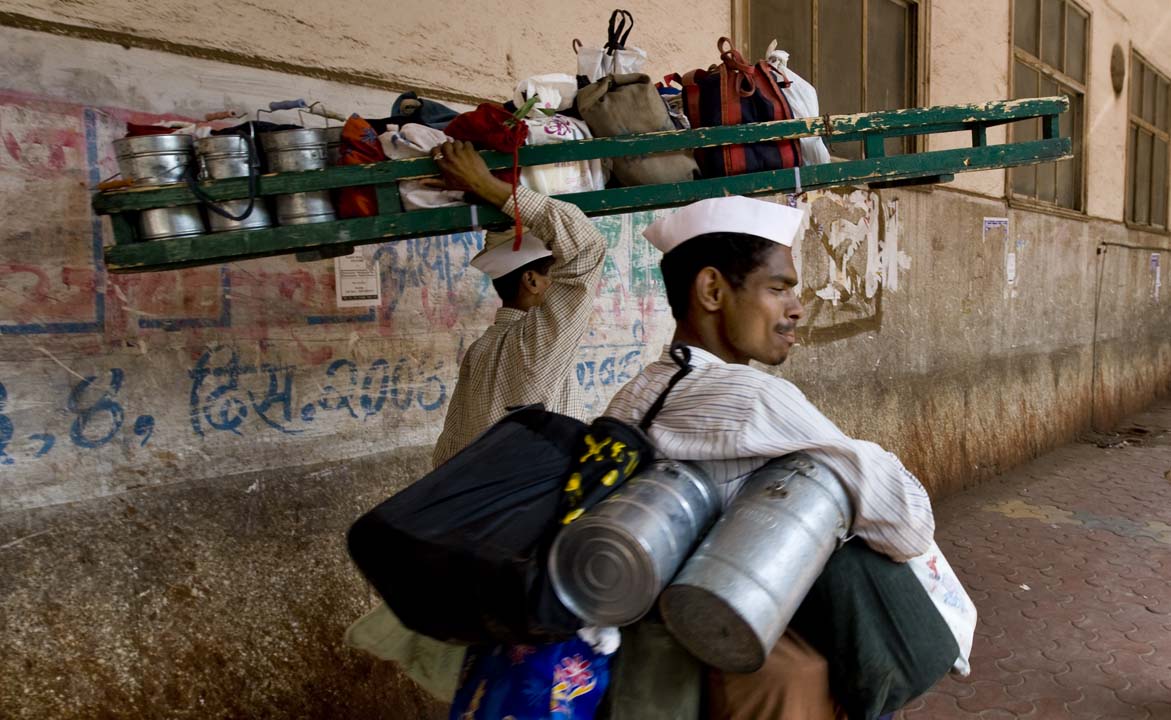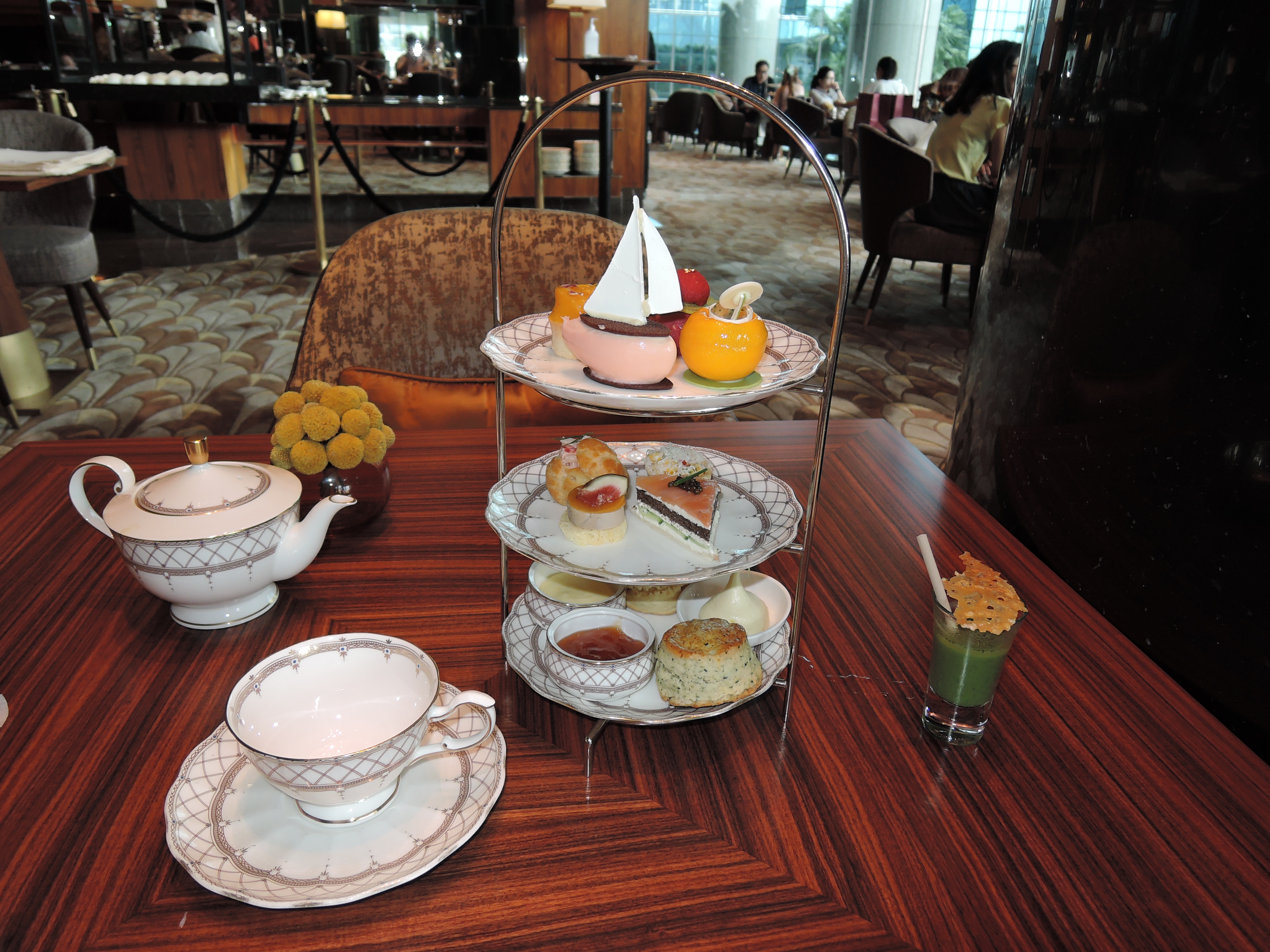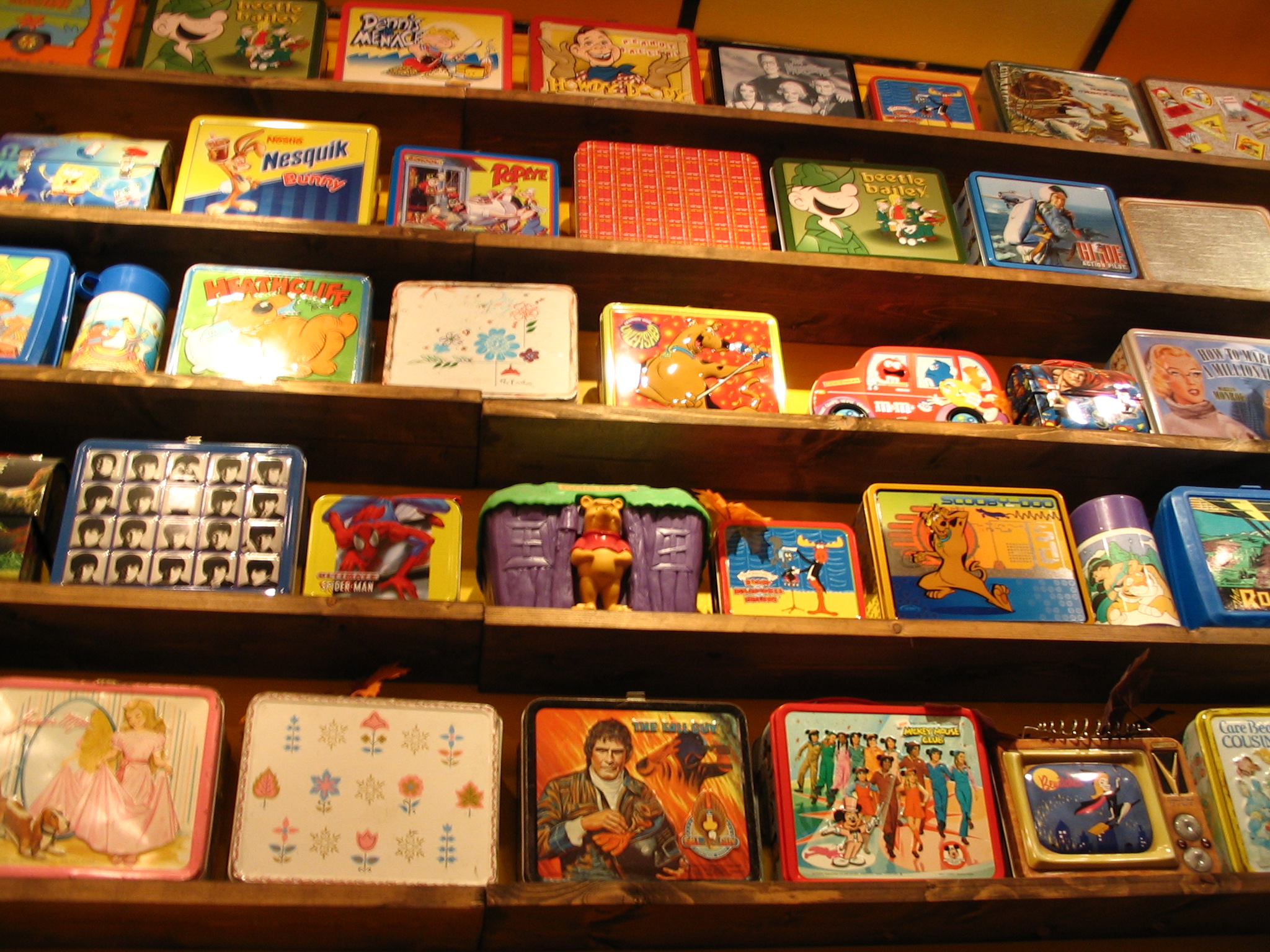|
Tiffin
Tiffin is an Indian English word for a type of meal. It refers to a light breakfast or a light tea-time meal at about 3 p.m., consisting of typical tea-time foods. In certain parts of India, it can also refer to the midday luncheon or, in some regions of the Indian subcontinent, a between-meal snack. When used in place of the word "lunch", however, it does not necessarily mean a light meal. Etymology In the British Raj, tiffin was used to denote the British custom of afternoon tea that had been supplanted by the Indian practice of having a light meal at that hour. It is derived from "tiffing", an English colloquial term meaning to take a little drink. By 1867 it had become naturalised among Anglo-Indians in northern British India to mean luncheon.cites H. Wedgwood (1862) "''Tiffin'', now naturalised among Anglo-Indians in the sense of luncheon, is the North country tiffing (properly sipping)". See also . Current usage In South India and in Nepal, tiffin is generally a sna ... [...More Info...] [...Related Items...] OR: [Wikipedia] [Google] [Baidu] |
Dabbawala
The dabbawalas (also spelled dabbawallas or dabbawallahs, called tiffin wallahs in older sources) constitute a lunchbox delivery and return system that delivers hot lunches from homes and restaurants to people at work in India, especially in Mumbai. The lunchboxes are picked up in the late morning, delivered predominantly using bicycles and railway trains, and returned empty in the afternoon. Origins In the late 1800s, an increasing number of migrants were moving to Bombay from different parts of the country, and fast food and canteens were not prevalent. All these people left early in the morning for offices, and often had to go hungry for lunch. They belonged to different communities, and therefore had different types of tastes, which could only be satisfied by their own home-cooked meals. So, in 1890, Mahadeo Havaji Bachche started a lunch delivery service in Bombay with about a hundred men. This proved to be successful, and the service grew from there. In 1930, he inform ... [...More Info...] [...Related Items...] OR: [Wikipedia] [Google] [Baidu] |
Tiffin Carrier
Tiffin carriers or dabbas are a kind of lunch box used widely in Asia and the Caribbean for tiffin meals. From India, they spread to Indonesia, Malaysia, Singapore, Guyana, Suriname and Trinidad and Tobago, where they are now widely used. They are also used extensively in Hungary, primarily to transport restaurant meals for consumption at home. The Hungarian version typically contains soup, a main course, and piece of cake. A very similar device is called ''Henkelmann'' in Germany. It is usually round or oval similar to military mess kits. The ''Henkelmann'' was very popular until the 1960s, but is very rarely used by Germans today. In the Indian city of Mumbai, there is a complex and efficient delivery system that regularly delivers hot lunches packed in ''dabbas'' to city office workers from their suburban homes or from a caterer. It uses delivery workers known as '' dabbawalas''. The book ''Tiffin: An Untold Story'' covers 172 tiffin carriers, some over a century old. ... [...More Info...] [...Related Items...] OR: [Wikipedia] [Google] [Baidu] |
Tiffin Carrier
Tiffin carriers or dabbas are a kind of lunch box used widely in Asia and the Caribbean for tiffin meals. From India, they spread to Indonesia, Malaysia, Singapore, Guyana, Suriname and Trinidad and Tobago, where they are now widely used. They are also used extensively in Hungary, primarily to transport restaurant meals for consumption at home. The Hungarian version typically contains soup, a main course, and piece of cake. A very similar device is called ''Henkelmann'' in Germany. It is usually round or oval similar to military mess kits. The ''Henkelmann'' was very popular until the 1960s, but is very rarely used by Germans today. In the Indian city of Mumbai, there is a complex and efficient delivery system that regularly delivers hot lunches packed in ''dabbas'' to city office workers from their suburban homes or from a caterer. It uses delivery workers known as '' dabbawalas''. The book ''Tiffin: An Untold Story'' covers 172 tiffin carriers, some over a century old. ... [...More Info...] [...Related Items...] OR: [Wikipedia] [Google] [Baidu] |
Tiffin (confectionery)
Tiffin is a form of cake-like confection composed of crushed biscuits (most commonly digestive biscuits), sugar, syrup, raisins, cherries and cocoa powder, often covered with a layer of melted striped chocolate. Unlike regular cakes, Tiffin does not require baking. Instead, following preparation of the mixture, the confection is chilled until set. As a consequence the product may also be known as " fridge cake" or another similar term. It was invented in the early 1900s in Troon, Scotland. Products The confectioner Cadbury produces a chocolate bar called Tiffin, consisting of biscuit pieces and raisins in chocolate, as part of its Dairy Milk range. Retrieved 3 September 2022 See also *[...More Info...] [...Related Items...] OR: [Wikipedia] [Google] [Baidu] |
Tea (meal)
Tea (in reference to food, rather than the drink) has long been used as an umbrella term for several different meals. English writer Isabella Beeton, whose books on home economics were widely read in the 19th century, describes meals of various kinds and provides menus for the "old-fashioned tea", the "at-home tea", the "family tea", and the "high tea". ''Teatime'' is the time at which this meal is usually eaten, which is mid-afternoon to early evening. Tea as a meal is associated with the United Kingdom, the Republic of Ireland, and some Commonwealth countries. Some people in Britain and Australia refer to their main evening meal as "tea" rather than "dinner" or " supper", but generally, with the exception of Scotland and Northern England, "tea" refers to a light meal or a snack. A ''tea break'' is the term used for a work break in either the morning or afternoon for a cup of tea or other beverage. The most common elements of the tea meal are the drink itself, with cak ... [...More Info...] [...Related Items...] OR: [Wikipedia] [Google] [Baidu] |
Indian Cuisine
Indian cuisine consists of a variety of regional and traditional cuisines native to India. Given the diversity in soil, climate, culture, ethnic groups, and occupations, these cuisines vary substantially and use locally available spices, herbs, vegetables, and fruits. Indian food is also heavily influenced by religion, in particular Hinduism and Islam, cultural choices and traditions. Historical events such as invasions, trade relations, and colonialism have played a role in introducing certain foods to this country. The Columbian exchange, Columbian discovery of the New World brought a number of new vegetables and fruit to India. A number of these such as potatoes, tomatoes, Chili pepper, chillies, peanuts, and guava have become staples in many regions of India. Indian cuisine has shaped the history of international relations; the spice trade between India and Europe was the primary catalyst for Europe's Age of Discovery. Spices were bought from India and traded around Euro ... [...More Info...] [...Related Items...] OR: [Wikipedia] [Google] [Baidu] |
Lunchbox
A lunch box (alt. spelling lunchbox) refers to a hand-held container used to transport food, usually to work or to school. It is commonly made of metal or plastic, is reasonably airtight and often has a handle for carrying. In the United States In the United States a lunchbox may also be termed a lunch pail, lunch bucket or lunch tin, either as single words or paired. The concept of a food container has existed for a long time, but it was not until people began using tobacco tins to carry meals in the early 20th century, followed by the use of lithographed images on metal, that the containers became a staple of youth, and a marketable product. It has most often been used by schoolchildren to take packed lunches, or a snack, from home to school. The most common modern form is a small case with a clasp and handle, often printed with a colorful image that can either be generic or based on children's television shows or films. Use of lithographed metal to produce lunch boxes ... [...More Info...] [...Related Items...] OR: [Wikipedia] [Google] [Baidu] |
Dosirak
''Dosirak'' (Hangul: ; Hanja: ), also known as ''gwakpap'' (Hangul: ; Hanja: ) refers to a packed meal, often for lunch. It usually consists of '' bap'' (, cooked rice) and several ''banchan'' (side dishes). The lunch boxes, also called ''dosirak'' or ''dosirak-tong'' (dosirak case), are typically plastic or thermo-steel containers with or without compartments or tiers. Dosirak is often home-made, but is also sold in train stations and convenience stores. Dosirak in its current iteration was introduced to Korea during the Japanese occupation of Korea (1910–1945) by the Japanese who had called their variation of a packed meal as , itself from the Chinese term '' biandang'' (, ), which means "convenient" or "convenience". During this period, Korean cuisine adopted foreign cuisines as well as Japanese food items such as bento or sushi rolled in sheets of seaweed, popularized in Korea under the name of gimbap. Varieties Home-made ''dosirak'' is often packed in tiered lunch ... [...More Info...] [...Related Items...] OR: [Wikipedia] [Google] [Baidu] |
Bento
A is the Japanese iteration of a single-portion take-out or home-packed meal, often for lunch. Outside Japan, it is common in other East and Southeast Asian culinary styles, especially within Chinese, Korean, Singaporean cuisines and more, as rice is a common staple food in the region. The term ''bento'' is derived from the Chinese term ''biandang'' (, ), which means "convenient" or "convenience". A traditional ''bento'' may contain rice or noodles with fish or meat, often with pickled and cooked vegetables in a box."Bento: Changing New York's Lunch Culture," ''Chopsticks NY,'' vol. 27, July 2009, p. 10-11. Containers range from mass-produced disposables to hand-crafted lacquerware. Often various dividers are used to separate ingredients or dishes, especially those with strong flavors, to avoid them affecting the taste of the rest of the meal. A typical divider is green plastic grass, also known as the 'sushi grass'. This also works to slow the growth of bacteria. ''Bento'' ar ... [...More Info...] [...Related Items...] OR: [Wikipedia] [Google] [Baidu] |
Packed Lunch
A packed lunch (also called pack lunch, sack lunch or brown-bag lunch in North America) is a lunch which is prepared before arriving at the place where it is to be eaten. Typically, it is prepared at home or at a hotel, or produced commercially for sale in vending machines (especially in Japan) or at convenience stores. They are often eaten in a school or workplace, or on an outing. Technique The food is usually wrapped in plastic, aluminum foil, or paper and can be carried (" packed") in a paper bag (" sack"), plastic bag or lunchbox. Lunchboxes made out of metal, plastic or vinyl are popular. They provide a way to take heavier lunches in a sturdier box or bag, and are also considered more environmentally friendly than disposable packaging. While packed lunches are usually taken from home by the people who are going to eat them, in Mumbai, India, tiffin boxes are most often picked up from the home and brought to workplaces later in the day by so-called dabbawallas. ... [...More Info...] [...Related Items...] OR: [Wikipedia] [Google] [Baidu] |
Lunch Box
A lunch box (alt. spelling lunchbox) refers to a hand-held container used to transport food, usually to work or to school. It is commonly made of metal or plastic, is reasonably airtight and often has a handle for carrying. In the United States In the United States a lunchbox may also be termed a lunch pail, lunch bucket or lunch tin, either as single words or paired. The concept of a food container has existed for a long time, but it was not until people began using tobacco tins to carry meals in the early 20th century, followed by the use of lithographed images on metal, that the containers became a staple of youth, and a marketable product. It has most often been used by schoolchildren to take packed lunches, or a snack, from home to school. The most common modern form is a small case with a clasp and handle, often printed with a colorful image that can either be generic or based on children's television shows or films. Use of lithographed metal to produce lunch boxes ... [...More Info...] [...Related Items...] OR: [Wikipedia] [Google] [Baidu] |
Chapati
Chapati (alternatively spelled chapatti, chappati, chapathi, or chappathi; pronounced as IAST: ), also known as '' roti'', ''rotli'', ''safati'', ''shabaati'', ''phulka'', (in East Africa) ''chapo'', (in Marathi) ''poli'', and (in the Maldives) ''roshi,'' is an unleavened flatbread originating from the Indian subcontinent and staple in India, Nepal, Bangladesh, Pakistan, Sri Lanka, East Africa, Arabian Peninsula and the Caribbean. Chapatis are made of whole-wheat flour known as atta, mixed into dough with water, oil (optional), salt (optional) in a mixing utensil called a '' parat'', and are cooked on a '' tava'' (flat skillet).Nandita Godbole, 2016Roti: Easy Indian Breads & SidesChitra Agrawal, 2017Vibrant India: Fresh Vegetarian Recipes from Bangalore to Brooklyn page 35. It is a common staple in the Indian subcontinent as well as amongst expatriates from the Indian subcontinent throughout the world. Chapatis were also introduced to other parts of the world by immigrants ... [...More Info...] [...Related Items...] OR: [Wikipedia] [Google] [Baidu] |







